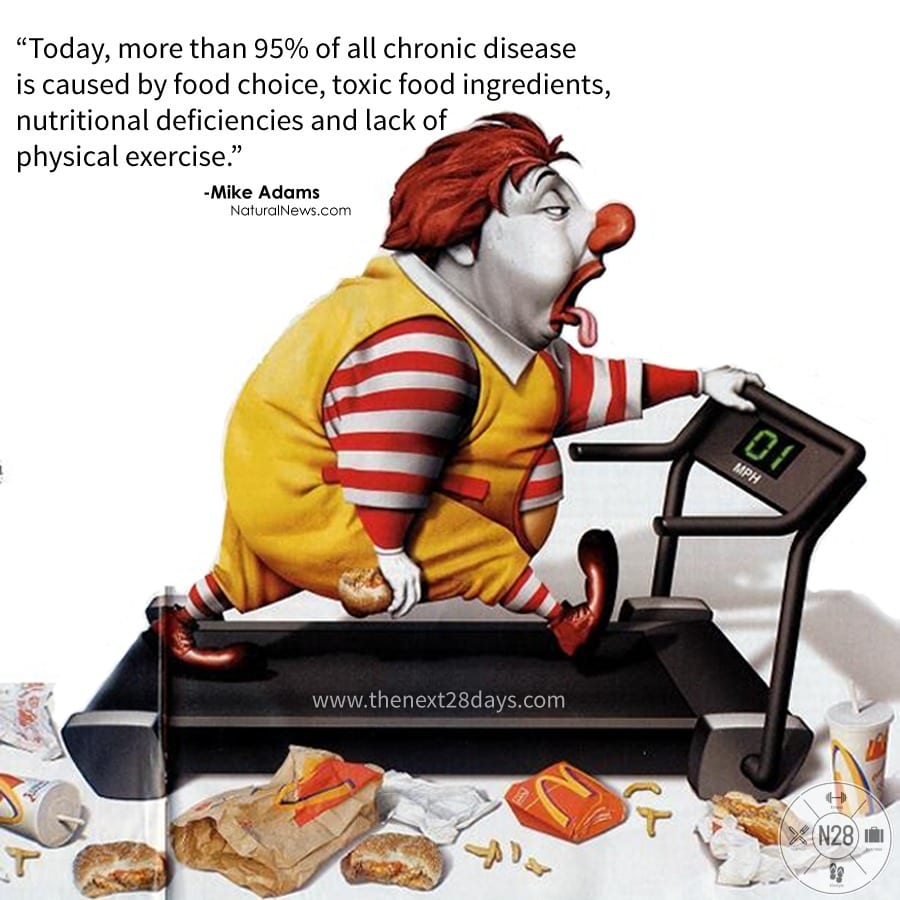
Food Safety Alert: Identifying Toxic Ingredients in U.S. Products
Updated Feb 29, 2024
In a world where profit margins often precede public health, the American food landscape is riddled with legally sanctioned poisons. It’s a bitter pill to swallow, but the truth is that our grocery store shelves are lined with products that contain ingredients other nations have deemed too hazardous for consumption. It’s an outrage, a blatant disregard for the well-being of consumers, where the almighty dollar trumps the sanctity of human health.
Take, for instance, the stark reality that in Singapore, using certain chemicals in food can land you a hefty fine or even a prison sentence. Yet, here in the U.S., these same substances are casually mixed into our everyday meals. We’re talking about chemicals that share a disturbing kinship with substances designed to stop carpets from igniting. The same components that make your soda pop fizz are cosied up next to ingredients used to extinguish flames.
And it doesn’t stop there. The snacks in your pantry, like a box of Chex Mix, may contain additives linked to cancer in laboratory animals. It’s a sinister game of Russian roulette with our health, where the bullets are the very ingredients that federal agencies have given the green light.
A recent exposé, initially spotlighted by a major media outlet, has highlighted six food additives that are pervasive in a wide array of popular American groceries. These substances, sanctioned by the Food and Drug Administration, are the same ones that have caused international governments to raise the red flag, banning them to protect their citizens.
But more than 10,000 chemicals are allowed in food sold in the U.S. Many of these widely used chemicals are associated with significant health harms, including increased risk of cancer, developmental harm, and hormone disruption. Almost 99 per cent of food chemicals introduced since 2000 were greenlighted for use by food and chemical companies rather than adequately reviewed by the Food and Drug Administration.
The Food Additives Amendment and the Color Additives Amendments include the Delaney Clause, which prohibits the approval of an additive “if it is found to induce cancer when ingested by” people or animals. Yet, the statutes and regulations to enforce these laws seem to be more of a formality than a firewall against the dangers lurking in our food.
Chemical hazards are one of the main causes of food contamination associated with foodborne disease outbreaks. The origins of chemical contaminants are various, from the field to the plate: soil, environment, disinfection by-products, personal care products, air, water, and packaging material. Even the food that is consumed and the water that is taken are not safe from the invasion of chemicals in unsafe concentrations.
It’s a grim picture of corporate greed and a regulatory system that seems to be asleep at the wheel. The agencies tasked with safeguarding our food supply appear to be in a cosy partnership with the industries they regulate. It’s a betrayal of the public trust, a cavalier attitude toward human life and health that prioritizes profit over people.
We must arm ourselves with knowledge as consumers and demand transparency and accountability. We must read labels, question sources, and challenge the status quo. It’s time to stand against the toxic tide flooding our food supply. It’s time to demand better for our health, our families, and our nation’s future.
Unveiling Disturbing Truths: Toxic Ingredients in Everyday Products
In a startling revelation, it has come to light that some commonly consumed products contain alarming ingredients:
1. Mt. Dew’s Fiery Secret: Astonishingly, Mt. Dew includes a chemical used as a fire retardant in carpets.
2. Bubble Yum’s Dark Side: Bubble Yum, a famous bubble gum, contains a chemical linked to cancer in laboratory rats.
Moreover, various forms of food colouring are one of the most pervasive culprits in harmful ingredients. Shockingly, these colourings are derived from petroleum and are prevalent in everyday items such as soda, sports drinks, mac and cheese, cake, candy, and numerous other American products. Research has shown that the chemicals used in these dyes have the potential to cause various cancers and even mutate healthy DNA.
To understand the larger picture, it’s essential to recognize that controlling the masses often involves lowering their intelligence through poisonous substances and extreme stress. Pair this with a subpar education system, creating a new generation of highly pliable individuals. This phenomenon is a concerning reality in the United States.
To fully control the masses (crowd), you need to lower their IQ via poison and extreme stress, push them through a substandard education system, and viola, you have created a new breed of highly malleable lemmings. This is what is going on in the US. The only way to escape from this almost perfectly laid trap is to pay attention to all the ingredients listed on the foods you ingest (if it contains a strange-sounding name, avoid it as, in most cases, it’s not good for you).
Secondly, homeschool your children if you can or have the money, send them to a good school and teach them that being a so-called team player is only for those who want to be controlled by someone else. Hence, there is a massive emphasis on being a team player. Notice that the world is full of teams but not so many coaches; the coach controls the unit.
Unwrapping the Truth: Hidden Risks in Everyday Foods
The presence of certain ingredients in processed foods has raised concerns about potential health risks. These ingredients, often found in processed foods that make up a significant portion of the average American diet, include:
Refined Grains and trans fats: These are commonly found in processed foods and can harm health. Trans fats, in particular, are associated with an increased risk of heart disease.
High Fructose Corn Syrup is a sweetener linked to obesity and other health issues when consumed in large amounts.
– Artificial Additives: Including food dyes and preservatives that may have adverse health effects. Some studies suggest certain food dyes could be linked to animal health issues, sparking ongoing debates about their safety in humans.
Monosodium Glutamate (MSG) is a flavour enhancer that some people may react to with headaches or other symptoms, although the FDA generally recognizes it as safe.
– Recombinant Bovine Growth Hormone (rBGH): Used to increase milk production in cows, associated with high levels of IGF-1, which may contribute to the risk of various cancers.
Refined Vegetable Oils are high in omega-6 fatty acids, which, when consumed in excess, may contribute to inflammation and associated diseases.
Sodium Benzoate is a preservative used in various food products that has been identified as a potential carcinogen and may damage DNA.
Brominated Vegetable Oil: Used in some citrus-flavored beverages, it has been linked to severe health effects, leading to its ban in certain places.
– Potassium Bromate, Propyl Paraben, and Red Dye No. 3: Additives banned in some jurisdictions due to health concerns.
Titanium Dioxide: Previously considered a banned substance due to health concerns, it is still used in many food products.
These ingredients are subject to ongoing research and regulatory review as health advocates and consumers call for greater scrutiny and transparency regarding food additives. It’s essential for consumers to be aware of these ingredients and to read food labels carefully to make informed choices about their diets.
A closer look at some of these Toxic ingredients
Shortening
Ditch any food that lists shortening or partially hydrogenated oil as an ingredient since these are also evil trans fats. In addition to clogging your arteries and causing obesity, they also increase your risk of metabolic syndrome. Choose healthier monounsaturated fats, such as olive, peanut, and canola oils and foods containing unsaturated omega-3 fatty acids.
High Fructose Corn Syrup
The evil king of all refined grains is high fructose corn syrup (HFCS). Although the amount of refined sugar we consume has declined over the past 40 years, we’re consuming almost 20 times as much HFCS. According to researchers at Tufts University, Americans consume more calories from HFCS than any other source. It’s in practically EVERYTHING. HFCS increases triglycerides, boosts fat-storing hormones, and drives people to overeat and gain weight. Adopt my zero-tolerance policy and steer clear of this sweet “poison.”
Sodium Benzoate and Potassium Benzoate
These preservatives are sometimes added to soda to prevent mould from growing, but benzene is a known carcinogen linked with severe thyroid damage. Dangerous levels of benzene can build up when plastic soda bottles are exposed to heat or when the preservatives are combined with ascorbic acid (vitamin C).
Butylated Hydroxyanisole (BHA)
BHA is another potentially cancer-causing preservative, but it has been deemed safe by the FDA. Its job is to help prevent spoilage and food poisoning, but it’s a major endocrine disruptor and can seriously mess with your hormones.
Sodium Nitrates and Sodium Nitrites
These two preservatives are in processed meats like bacon, lunch meat, and hot dogs. They’re some of the worst offenders, and they’re believed to cause colon cancer and metabolic syndrome, which can lead to diabetes. Protect your health by always choosing fresh, organic meats. thebetterhealthstore
Beyond the Surface: Provocative Perspectives

High Cholesterol Myths: Debunking the Medical Lies

What Is the Collective Psyche? The Road to Investment Losses

What does the valley of despair graph reveal about emotional cycles in investing?

What is a compelling market behavior example?

What key characteristics of real estate market cycles include?

Cabbage Juice Alchemy: Unlocking Mysteries of Health and Vitality

Cabbage Juice for Ulcers: A Simple and Effective Healing Recipe

Contrarian investment strategies the psychological edge

Why is behavioral finance the study of human decision-making?

The Virtue of Selfishness: Unlock a Better Life and Success

Power Up Your Plate: The Magnetic Allure of Beetroot Powder

How to improve logical thinking?

Which of the Following Statements Are True About the Velocity of Money? Let’s Find Out

What is the average bear market retracement and how does it impact investors?

The Great Cholesterol Scam: Profiting at the Expense of Lives
the Level Of Investments In A Markets Indicates
Next stock market crash predictions
what happens if the stock market crashes




The FDA is not allowed to do their or is not doing their job. The quality control measures being taken are seriously lacking. Try this website: https://www.fda.gov/ICECI/EnforcementActions/WarningLetters/default.htm